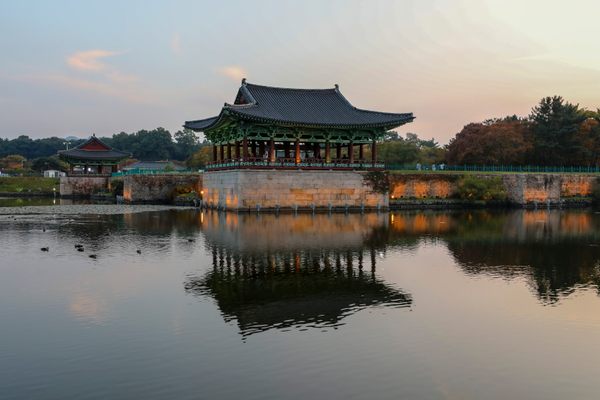Welcome to Where to Wander, our selection of the best under-the-radar destinations in 2025. To see more surprising sites around the world that have fewer tourists and more locals, check out all of Atlas Obscura’s favorite places to travel this year.
Have you ever visited somewhere that felt untouched by time? Maybe it was a pristine nature preserve, or an immersive museum, or a business that’s been operating in the same place for centuries. At these magical sites across the world, see where history comes to life and the past feels present.
Founded in 1370, Lamu Island is the oldest continuously inhabited settlement in Kenya and a great place to see historic Swahili architecture, which blends influences from East Africa, South Asia, and the Middle East. The island’s unique, timeless way of life includes a reliance on the large local population of donkeys, which are used for traveling the island’s narrow streets and for an annual race along the beach.
Since 705, the world’s oldest hotel (Guinness-certified) has provided travelers with respite and relaxation, thanks to the local hot springs and healing baths. Ownership of Keiunkan has passed down through 52 generations of the same family, and while it’s grown over time, much has remained unchanged. Modern amenities coexist with natural beauty in a calming environment that once hosted imperial dignitaries and samurai.
Amador County, California, is home to the last water-powered machine shop and foundry in the United States. Knight Foundry was most active during the mining boom of the 1870s, though it continued to operate commercially until as late as 1991. Today, the site hosts historical tours and interactive classes, and preserves the impressive 19th-century waterwheels and other equipment from its gold rush heyday.
In medieval Europe, books were so valuable that public libraries chained them to the shelves to keep them from being stolen. Saint Walburga’s Church in the center of Zutphen, Netherlands houses one of the only remaining chained libraries in the world. The naturally lit reading room features leather-bound tomes still locked down by the monks who placed them there in the 16th century.
Legend has it that this magnificent seventh-century temple—one of the oldest in Bhutan—was built overnight on the foot of a sleeping demoness. In the centuries since its construction, Kyichu Lakhang has been maintained and expanded, but still houses ancient statues that date back to its original smaller edifice. The temple’s cloisters provide a peaceful space of contemplation for Buddhist monks among fruit trees, prayer wheels, and painted murals.
Thousands of years ago, birds were New Zealand’s dominant land animals, but many were driven to extinction when humans arrived with other predatory mammals, such as cats. On the tiny island of Kapiti, conservationists have eliminated introduced predators, allowing endangered birds like the little spotted kiwi—extinct on New Zealand’s main islands—to thrive. If you’re one of the 68 lucky visitors allowed on Kapiti per day, you’ll get a glimpse of New Zealand’s mammal-free, ancient past.
For nearly 300 years, Mikvé Israel-Emmanuel has served as a gathering place for the Jewish community of Willemstad, Curaçao’s capital city. It’s the oldest standing synagogue in the Americas, but the building is also unique for another reason: The floor inside is covered with a thick layer of sand. While different theories attempt to explain the symbolism behind the sand floor, which is also found in some other historic synagogues, its true origin remains a mystery.
Located in the ancient city of Fez, Al-Karaouine is the world’s oldest university. The school and adjacent mosque have been in operation since their female founder established them in 859, and while the curriculum has expanded over the centuries, many traditions are still upheld. Al-Karaouine’s simple yet beautiful design is decorated with calligraphy and Andalusian art, and its library houses historic copies of the Quran and other precious manuscripts.
Surrounded by beautiful mountain views, Braña la Pornacal is the largest and best-preserved example of a braña: a traditional seasonal settlement of thatched-roof cabins. In centuries past, nomadic cattle-herders in northwestern Spain inhabited villages like this one during the spring and fall. Today, the 34 thatch buildings of the braña are still maintained regularly to educate visitors about a disappearing way of life.
This artificial pond’s shape is said to be an outline of Korea at the time of its construction in the seventh century. Wolji Pond was originally part of a manufactured complex of gardens and hills, which surrounded a royal palace in Korea’s ancient Silla kingdom. After falling into ruin, the site was restored beginning in the 1970s, including recreations of the ancient pavilions lining the banks of the “pond that reflects the moon.”


